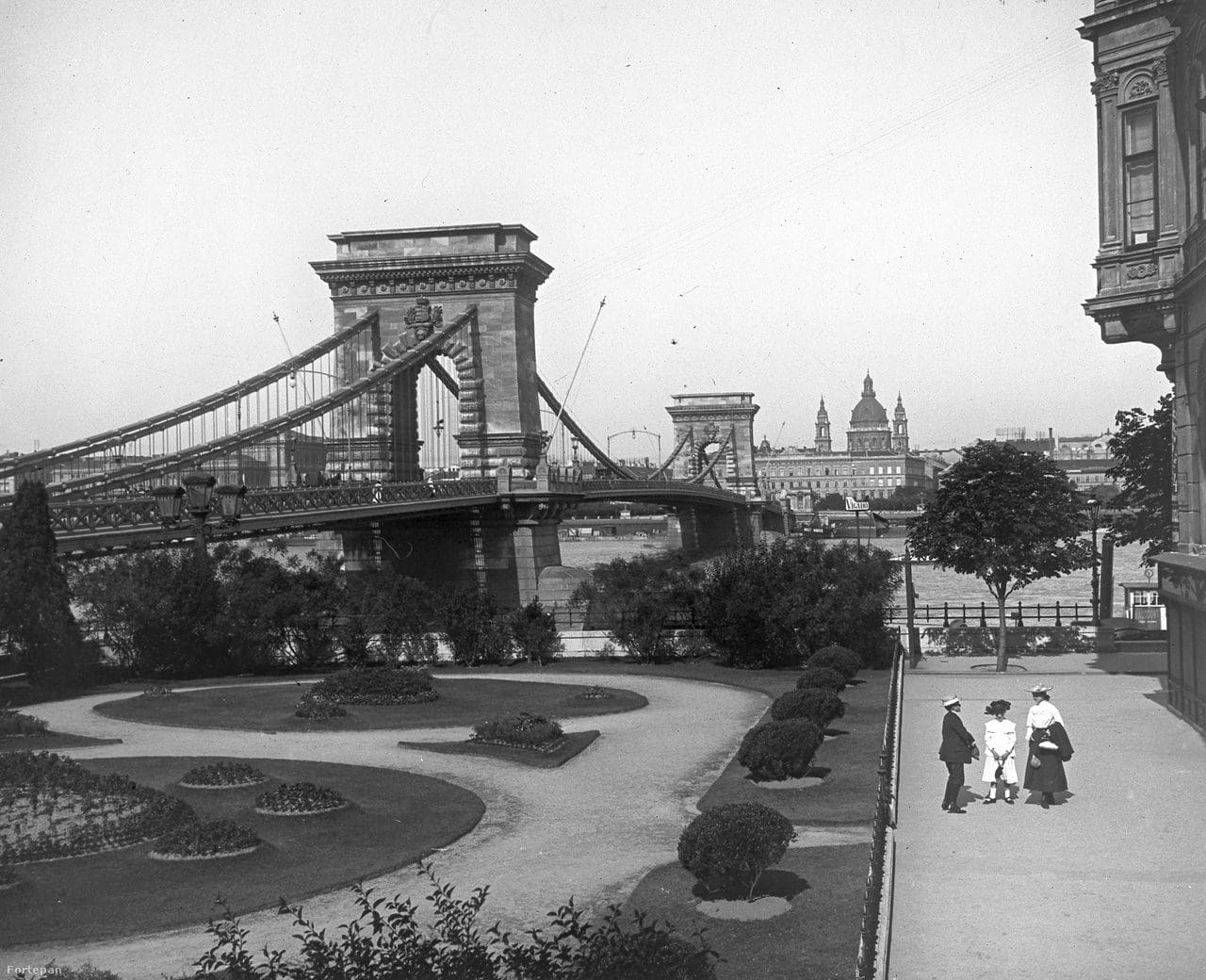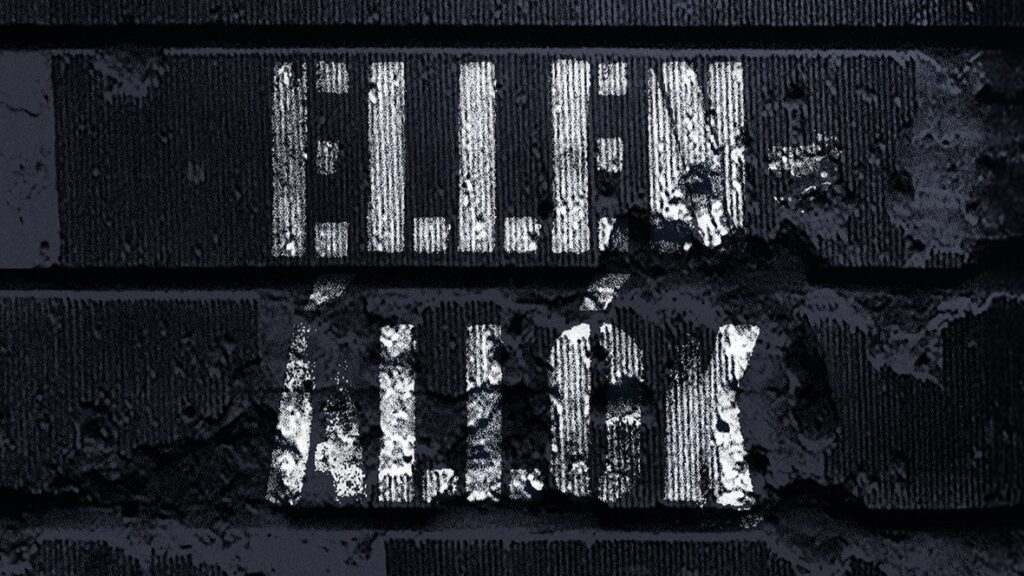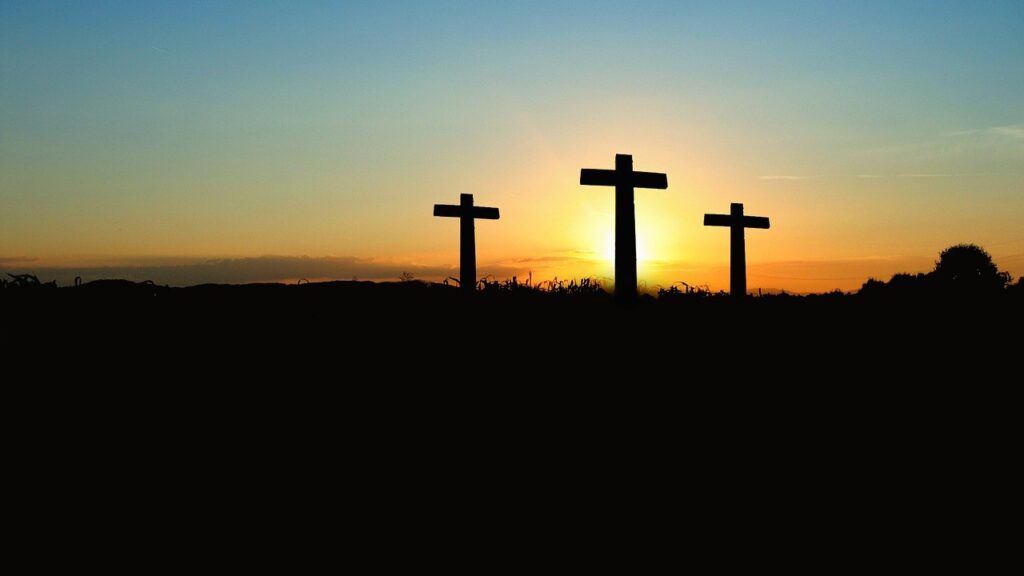During their history, the bridges of Budapest crossing the Danube have changed their names several times, but there are some that still bear their original designation. In this article we will walk you through the history of the names of Budapest’s bridges and the historical events that influenced their evolution.
Chain Bridge
The best-known and at the same time the oldest bridge providing a permanent connection between the Buda and the Pest side of the Danube is the Chain Bridge. Its construction was initiated by Count István Széchenyi, one of the greatest statesmen in Hungary’s history. The classicist bridge built in 1849 was simply called ‘the Chain Bridge’ for a long time, despite the fact that even Lajos Kossuth, the leader of the 1848–1849 revolution, suggested during the bridge’s construction in 1842 that it should be named after István Széchenyi.
Nonetheless, for more than half a century, the official name of the bridge remained Chain Bridge, despite several proposals for a new name being put forward around the turn of the century. According to the 28 January 1906 issue of the journal Építő Ipar, the Ministry of Finance, the operator of the bridge, responded thus to those seeking a name change:
‘Despite the highly respected memory of Count István Széchenyi, it is not practical to change the name of the [Chain] Bridge, as it is listed under its current name in our legal codes, it is known by this name all over the world and is referred to as such in professional literature. Therefore, changing a name that has been around for more than half a century would undoubtedly cause confusion.’
In the first half of the 20th century, traffic across the bridge had grown to such an extent that it became necessary to restructure it—it was then that, nearly 70 years after its construction, the bridge was finally renamed Széchenyi Chain Bridge, in honour of Count István Széchenyi.
Margaret Bridge
The Margaret Bridge, Budapest’s second permanent bridge, was built between 1872 and 1876, and it got its name, unsurprisingly, from the neighbouring Margaret Island. But where does the name of the island come from? To find out, we have to travel back in time almost 800 years to St Margaret of Hungary, the daughter of King Béla IV and Maria Laskarina, who, according to her vow to the king during the Mongol invasion of Hungary, lived as a nun in the Dominican Monastery of the island in the 13th century. However, Margaret Island has borne its current name only since the 17th century.
The new Margaret Bridge inspired many artists—in the first year after its inauguration, Hungarian poet János Arany wrote his ballad titled Bridge Inauguration (Híd-avatás), which, along with Arany’s other ballads, was illustrated by acclaimed Hungarian painter Mihály Zichy two decades later.
Liberty Bridge
At the time of its planning, the Liberty Bridge was tentatively named after Vámház Square, Fővámház Square and Fővám Square as well, but during the Millennium festivities, it was eventually given its permanent name of Ferenc József Bridge after Franz Joseph I and was inaugurated in his presence in 1896.
During the German withdrawal in World War II, the bridge was blown up and it collapsed into the Danube; its wrecks can still be seen in the bed of the Danube when water levels are low. After its reconstruction, the bridge could not keep its original name for political reasons, thus, since 1946, it is officially called Liberty Bridge.
Elisabeth Bridge
The Elisabeth Bridge, which was also blown up in World War II and can no longer be seen in its original form, was called Eskü (Oath) Square Bridge at the time of its tendering process. However, after its inauguration in 1903, it was renamed after Empress Elisabeth or ‘Sisi’ of Austria, who was assassinated in Geneva a few years earlier, in 1898. Thereby, in the first half of the 20th century, the bridges named after the Habsburg Emperor Franz Joseph and his wife Elisabeth crossed the Danube next to each other.
The successor of the blown-up bridge was then handed over in 1964. Contrary to the Ferencz József Bridge, the new bridge, which has a completely different structure from the old one, could keep its original name.
Petőfi Bridge
At the beginning of its planning around the turn of the century, today’s Petőfi Bridge was first named after Boráros Square next to the Pest end of the bridge. However, since the decision on the construction coincided with the tenth anniversary of the election of Miklós Horthy as regent in 1930, the planned bridge was eventually named Horthy Miklós Bridge.
Unfortunately, during WWII, this bridge was not spared either: after it was blown up, a temporary pontoon bridge named after Hungarian poet Sándor Petőfi was built in 1949 and served the citizens of Budapest until the completion of the new bridge in 1952. The new bridge inherited the name of the pontoon bridge, which is how it finally got its present name of Petőfi Bridge.
Árpád Bridge
The bridge got its name after Árpád, Grand Prince of the Magyars, during its construction in 1939 (before WWII), but when it was handed over in 1950, it was renamed after Stalin, the Soviet dictator, on ideological grounds ‘at the request of the bridge builders’. Finally, the Árpád Bridge was officially given back its original name a few years later, in 1956.
Rákóczi Bridge
Today’s Rákóczi Bridge, built between 1992 and 1995, was already called Lágymányosi Bridge at the time of its design, and although the municipality of the 11TH district came up with several ideas for a name, such as Főnix (Phoenix) or Saint Ladislaus Bridge, its official name remained Lágymányosi Bridge for a long time. The bridge’s name was eventually changed in 2011, on the 300th anniversary of the Treaty of Szatmár, when it was given the name Rákóczi Bridge after the House of Rákóczi, a Hungarian noble family in the Kingdom of Hungary.
Click here to read the original article







